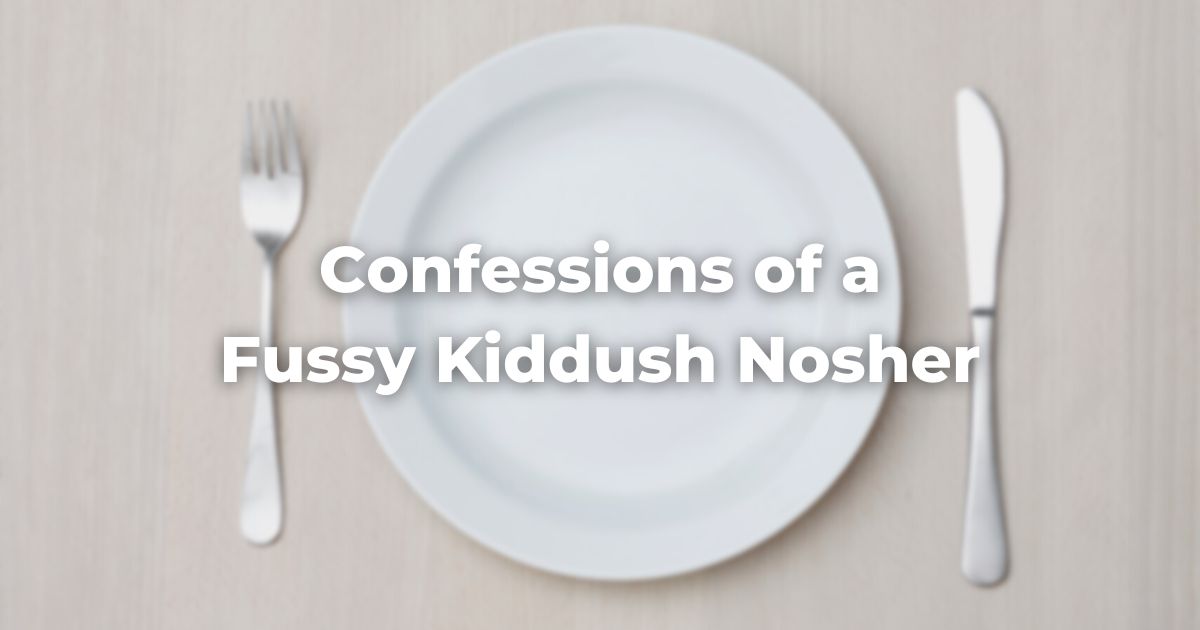My Jewish heritage has been called into question numerous times. It has nothing to do with my religious observance or my parentage. Rather, it all stems from what I put on my plate in the social hall at noon on Saturdays.
Or, to be more precise, what I don’t put on my plate.
You see, I’ve been a fussy eater all my life. My mother swears that I’m not as picky as I used to be, but some habits are hard to break. And most of typical Shabbat morning Kiddush fare may be popular in most of the Jewish world but are non-starters on my palette. I avoid menu staples like cream cheese, tuna salad, egg salad, herring, pickles (or pickled anything, for that matter), olives, cole slaw, raw tomatoes, most salad dressing, or pretty much anything with mayonnaise, vinegar, or mustard.
I really am Jewish. I promise you.
I can accept that I may be odd, and that these foods are commonplace at Kiddush for good reasons. (And if you enjoy some or most of these items, good news: there’s more for you!) But if you’re like me, how do you cope when you want to connect with friends and congregants while not subsisting on challah and pastries? And if you’re planning a Kiddush and hoping to accommodate different tastes, how can you diversify your offerings while still pleasing the traditional synagogue attendee?
I have a few tips that may be of help to the fussy Kiddush nosher:
- Soup is good food: If the solid food offerings seem a little slim for your tastes, look for a crock pot. Many congregations serve soup of some sort, which can provide a warm alternative to otherwise cold offerings. They’re usually healthy, and a hearty helping can fill you up enough to not need much else.
- Think outside the lox: I recognize that most North American synagogue attendees come from Ashkenazic backgrounds, but there’s a whole world of Sephardic and Mediterranean cuisine that can provide intriguing gastronomical options. Don’t get locked into serving or eating typical Kiddush foods every week.
- Themed Kiddush can be a dream Kiddush: When my beloved Chicago Cubs were about to finally win the World Series in 2016, I made a gentleman’s bet with a congregant, and he was kind enough to sponsor a celebratory Kiddush complete with popcorn, Cracker Jacks, and even mini deep-dish pizzas. You don’t have to be that fancy, but suggesting and/or providing a different menu here and there might add to the variety of Shabbat experiences—and even bring a few more people to shul.
- There are many ways to fill a plate: I endorse a no-shame Kiddush: If someone wants to avoid typical fare, that’s fine, and if someone else revels in tuna fish to the exclusion of all else, welcome them to your table too. We’re all different, so why shouldn’t our diets be different too?
- Don’t expect Kiddush to always be lunch: We’ve all been guests in someone else’s home, and we hopefully know that if you’re unsure that you’ll love what’s served, it doesn’t hurt to eat a little before you arrive or to plan to have something extra when you get home. What’s more, congregations don’t always have the financial flexibility to provide a dynamite culinary experience for everyone who enters. While we all enjoy a good nosh, also remember that Shabbat should also nourish our hearts and souls.
Whatever your appetite is, set yourself up to enjoy a taste of all that Shabbat and a Jewish community has to offer.
Author
-

Adam J. Rosenbaum is a Conservative rabbi, a proud father of three, and a baseball enthusiast. He has served communities in New Jersey, South Carolina, and western New York, among others.
View all posts






